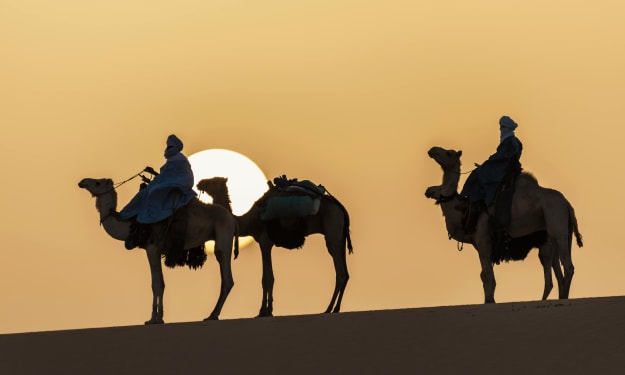Armenia: A Journey Through Millennia of Resilience and Cultural Heritage
Armenia: Echoes of Antiquity, Struggles, and Renewal

Nestled in the heart of the South Caucasus region, Armenia is a land of ancient civilizations, rich traditions, and enduring resilience. From its early origins and struggles for independence to its vibrant cultural heritage and modern challenges, the history of Armenia is a testament to the spirit and tenacity of its people.
Ancient Origins and Kingdoms:
The history of Armenia dates back to ancient times, with evidence of human habitation in the region dating back to the Neolithic era. The Armenian Highlands, located at the crossroads of Europe and Asia, were home to one of the earliest civilizations in the world.
One of the most significant periods in Armenian history was the establishment of the Kingdom of Urartu in the 9th century BCE. The Urartian civilization, centered around the capital city of Tushpa (modern-day Van), flourished for centuries, leaving behind impressive fortresses, temples, and inscriptions.
Christianity and the Armenian Apostolic Church:
In the early 4th century CE, Armenia became the first nation in the world to adopt Christianity as its state religion, under the rule of King Tiridates III and the influence of Saint Gregory the Illuminator. This momentous event marked the beginning of a close relationship between Armenia and the Christian faith, which continues to this day.
The Armenian Apostolic Church, one of the oldest Christian churches in the world, played a central role in preserving Armenian identity, culture, and language throughout centuries of foreign rule and persecution. Monasteries such as Etchmiadzin, Geghard, and Haghpat became centers of learning, spirituality, and artistic expression.
Foreign Domination and Struggles for Independence:
Throughout its history, Armenia has been subjected to foreign domination and conquest by various empires, including the Persian, Roman, Byzantine, Arab, Mongol, and Ottoman Empires. Despite periods of subjugation and oppression, the Armenian people maintained their distinct cultural identity and resilience.
One of the darkest chapters in Armenian history was the Armenian Genocide of 1915, carried out by the Ottoman Empire during World War I. The genocide resulted in the deaths of over one million Armenians through mass killings, forced deportations, and starvation, and remains a deeply traumatic and contested issue to this day.
Independence and Nation-Building:
Following the collapse of the Ottoman Empire and the end of World War I, Armenia declared its independence on May 28, 1918, establishing the first Republic of Armenia. However, Armenia's independence was short-lived, as the country soon fell under Soviet rule following the Russian Revolution of 1917.
Under Soviet rule, Armenia experienced significant economic and social development, with investments in education, healthcare, and industry. However, the period was also marked by political repression, censorship, and the suppression of Armenian national identity and cultural expression.
Modern Challenges and Opportunities:
In 1991, Armenia regained its independence following the dissolution of the Soviet Union, ushering in a new era of nation-building and democratic governance. Since then, Armenia has faced numerous challenges, including economic instability, political corruption, and conflict with neighboring Azerbaijan over the disputed region of Nagorno-Karabakh.
Despite these challenges, Armenia has made significant strides in promoting economic development, democratic reforms, and cultural preservation. The country's rich cultural heritage, including its ancient monasteries, churches, and archaeological sites, continues to attract tourists from around the world.
In recent years, Armenia has also emerged as a center of technological innovation and entrepreneurship, with a growing tech sector and a vibrant startup ecosystem. The country's educated workforce, favorable business environment, and strategic location make it an attractive destination for foreign investment and collaboration.
Looking to the future, Armenia faces both challenges and opportunities as it seeks to build a more prosperous, inclusive, and sustainable society. With its rich history, resilient spirit, and vibrant cultural heritage, Armenia remains a beacon of hope and inspiration for Armenians around the world.
In conclusion, the history of Armenia is a testament to the enduring spirit and resilience of its people. From its ancient origins to its modern aspirations, Armenia's journey reflects the triumphs and tribulations of a nation determined to preserve its cultural heritage and shape its own destiny.
About the Creator
Enjoyed the story? Support the Creator.
Subscribe for free to receive all their stories in your feed. You could also pledge your support or give them a one-off tip, letting them know you appreciate their work.





Comments (1)
Hello, AI is permitted on Vocal. It is a Vocal policy that content created with AI is identified as such at the start of the story/article. Your article/story has many hallmarks of AI-assisted/generated content. You can find the details of the Vocal policy here: https://vocal.media/resources/an-update-from-vocal-on-ai-generated-content, Please amend your piece to be in compliance. If you are not a Vocal+ member you will need to contact Vocal here ([email protected]) and ask them to send your content back into your 'Drafts' where you can edit your story/article/poem. If you don’t correct this the content may be removed by Vocal and/or you may be deleted from the platform. This has been reported to Vocal.